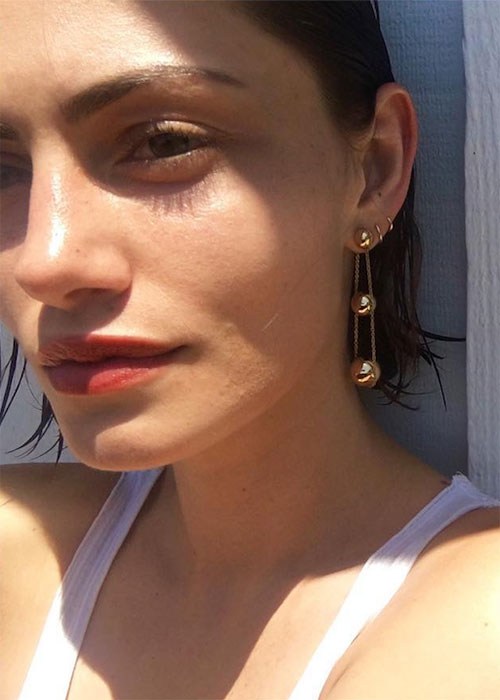7 top retinol myths, debunked

We clear the air about the powerhouse ingredient
We clear the air about the powerhouse ingredient
If you’re looking to reverse the signs of ageing and prevent new wrinkles from forming while also reducing acne and the scars they often leave behind, one of the top ingredients you should be reaching for is retinol. But we’re sure many of you already know that. After all, retinol (a vitamin A derivative) has been touted as the number one anti-ageing ingredient for some time. However, as retinol has become more and more popular, we’ve noticed a wealth of misinformation floating around about the powerhouse ingredient. That’s why we wanted to clear the air and debunk the top retinol myths with the help of Paula’s Choice Skin Care’s founder, Paula Begoun.
#1 / Retinol peels off the top layer of skin
While it’s understandable some people may think retinol works by peeling off the top layer of skin in order to reveal new skin underneath, Begoun explains “this is not at all what retinol should be doing. If anything, [any peeling] may be a sign retinol is not the ingredient for you”.
She adds, “retinol is not an exfoliant; rather it changes how new skin cells are formed in the lower layers of skin and improves how they move through the various layers of skin until they reach the surface. That is not the same as exfoliation, which is a natural process of skin shedding dead cells so they don’t build up and cause problems.”
Instead, Begoun warns any flaking or peeling is a sign your skin is being irritated by retinol. This can happen for a small portion of people when retinol products are used too often or in too high a dose.
#2 / Expensive retinol products are the only ones worth buying
“As is true with all skin care products – there are great expensive ones and bad expensive ones. The same is true for inexpensive skin care products – some are good and some are poorly formulated,” explains Begoun. When you’re on the hunt for a product formulated with retinol, she recommends looking for products that “contain an impressive mix of other anti-ageing ingredients (such as antioxidants and peptides). They should also never come in jar packaging. All skin care products are unstable when exposed to air, but that is even truer for retinol.”
It’s also important to note your retinol products should be housed in dark bottles and kept away from direct sunlight exposure, as UVA and UVB rays can destabilise the ingredient.
#3 / Stronger retinol formulas are more effective
Despite a plethora of research suggesting that retinols can produce visible benefits in a range of strengths from 0.03 up to two per cent, this myth that the stronger the better manages to live on. As we already mentioned previously, for some people, especially those new to retinol, stronger concentrations aren’t always better. Begoun says, “there are those who get great results from alternating between higher and lower strengths of retinol. Which strength you choose should be based on your history with retinol, whether you’re currently using a topical prescription retinoid product, and your skin concerns. For example, someone in their 40s with advanced signs of sun damage and deeper wrinkles should try a higher strength retinol, while someone in their 30s with fine lines and uneven skin tone can use a lower strength and graduate to stronger retinol products if and when it’s needed”.
#4 / Retinol only tackles fine lines and wrinkles
While retinol is highly effective at reducing the appearance of fine lines and wrinkles, the ingredient wears many more hats. Retinol “affects every aspect of improving and enhancing healthy, younger-looking, blemish-free skin,” adds Begoun. “Retinol can improve skin tone, skin texture, pore size, breakouts and various types of skin discolouration. It’s truly a multitasking skin care hero whose reputation is supported by over 50 years of research.”
#5 / Dry, red and irritated skin is an expected side effect
If you use your retinol products correctly, you really shouldn’t experience any dryness, redness or irritation. If you believe you are using your products correctly and sensitivity still occurs, Begoun says this may be due to other factors separate to retinol. “How your skin responds to retinol depends on the overall formula of the product (meaning no fragrance – synthetic or natural – or irritating plant extracts), the other bioactive products you use (such as high concentrations of niacinamide, vitamin C or acne products), if they’re applied separately or at the same time, and whether you’re good about protecting your skin with a broad-spectrum sunscreen every day.”
She also notes irritation may occur if you’re using drying cleansers and harsh scrubs. As a result, it’s essential you tailor your skin care routine appropriately and take stock of the ingredients you’re applying across your entire routine. You also need to ensure you apply products containing alpha hydroxy acids (AHAs) and beta hydroxy acids (BHAs) in the morning and retinols in the evening as AHAs, BHAs and retinols have been shown to destabilise each other, making their skin-enhancing properties ineffective. You can read more on the ingredient combinations that shouldn’t be mixed here.
#6 / Retinol and retinoic acid are the same thing
As retinol continues to be a hero ingredient in skin care formulas, you may have noticed the term retinoic acid popping up, too. While you would be forgiven for thinking the two ingredients are the same thing, Begoun says they’re not., “Retinol is the entire vitamin A molecule. When it absorbs into the skin, enzymes in the skin convert retinol to its active form, which is called all-trans retinoic acid.” Put simply, retinol is a cosmetic ingredient converted into retinoic acid when applied, whereas retinoic acid is a stronger, more active version of vitamin A that’s found in prescription products only.
#7 / You shouldn’t apply retinol around your eyes
Not only can you apply retinol around the eye area, you should – mainly because that’s where most damage occurs. “Retinol is proven to build new collagen and repair some amount of existing damage, both of which can improve fine lines and wrinkles around the eyes, plus loss of firmness. What you don’t need is a special eye-area product with retinol. If you’re using a gentle, fragrance-free facial product with retinol, you can apply it around the eyes, too. You can follow with an eye cream if you prefer using one,” shares Begoun.
Looking to expand your skin care knowledge further? Then discover the one face mask everyone should try and find out the best treatments for reducing acne scars.
Do you use products formulated with retinol in your skin care routine? Share your Holy Grail retinol products with us in the comments below.
Main image credit: @phoebejtonkin

Kate started working for BEAUTYcrew in early 2016, first as a contributor, and was then named Beauty Writer in 2017. She loves picking the brains of the industry's top experts to get to the bottom of beauty's toughest questions. Bronze eyeshadow palettes are her weakness and she's forever on the hunt for the perfect nude nail polish to suit her fair skin. Her words can also be found in Men's Health magazine, and she now works in PR.
Related tags
retinol /







